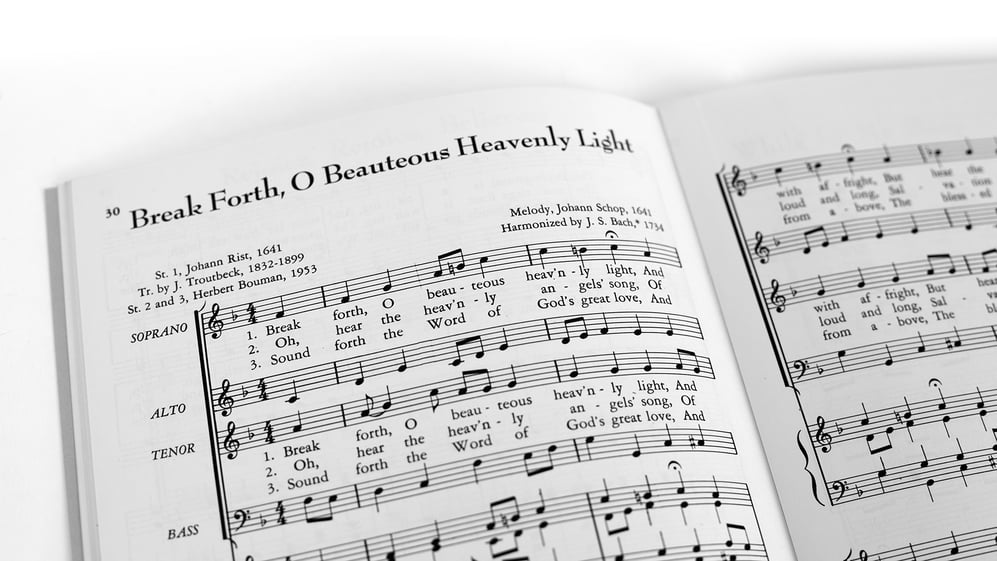Originality. A quick Google search of the word provides such synonyms as inventiveness, creativity, novelty, newness, individuality, and even the phrase break with tradition. Originality is a quality highly desired in today’s world. Just look at the trendy Instagram posts of fashion and modern art.
Plagiarism. According to Google, synonymous with piracy, theft, poaching, and appropriation. An action that has extremely serious consequences both within and outside of academia. Nobody wants to be accused of plagiarizing.
What is plagiarism in music?
Today, we tend to value the original while harshly criticizing those who borrow from others’ works. We have stringent copyright laws that protect the works of artists, composers, and authors from the thieving hands of fellow creators. Plagiarizing academic papers typically results in expulsion or worse. That doesn’t even address the ruined reputations of those convicted of plagiarism: positions lost, apologies given, professional reputations sullied.
The strong preference for original music composition finds its roots in the Romantic era. Historically, however, composers have borrowed themes from other musical works to use in their own pieces. In the Baroque era, composers shamelessly reused their earlier works and took ideas from others’ works to create some of the masterpieces we know. Later composers also used themes from others’ earlier work, typically to accomplish a purpose. Snatches of a theme from an earlier symphony or chamber piece incorporated into a new music composition might recall the mood of that particular piece, subtly suggesting a connection between the earlier work and the composer’s new one.
Originality presented itself as a different way of working with the same material, not as creating everything from scratch. The new and exciting might be the way a composer reworked the theme of a predecessor. It might be the way he incorporated a mood from one piece of music into his new work. Maybe he borrowed a melody but manipulated its rhythm to fit a new purpose. When a composer uses another's music in this way, it is necessary for the listener to be familiar with the original piece to appreciate the full effect of its change. The new piece can still be appreciated without this background knowledge, but knowing the history behind a new work allows for a fuller appreciation of it.
Why do we imitate the masters?
To become masters of their art, great composers needed to know what came before them—in other words, they imitated music. As much as art, music, and literature lovers today might espouse the greatness of the “original,” the Book of Ecclesiastes memorably reminds us that “there is nothing new under the sun” (1:9, ESV). Great art and music only come through building on what has come before. No child suddenly invents new notes or rhythmic values. To build on previous music, a person must master it to some extent. Every musician must learn what has been handed down before she can create something new. Knowledge and mastery are essential to the creation of a new work. No composer or artist is working in a void but rather has an extensive community of other composers and artists past and present. This community is essential for teaching and guiding.
Thus, it is important that we learn the great works of those who have come before. Too often, the “inspired” and “original” artists and composers are celebrated at the expense of those relying heavily on what has come before. We love the avant-garde. Even our education system reflects this: children in schools are given blank sheets of paper and urged to write or draw or create something but are offered no parameters. Copying another’s work is considered stifling and uninspired. Students are then applauded for any work of creative inspiration put forth, regardless of proper drawing principles, punctuation, spelling, or grammar.
Likewise, how could musically uneducated children compose good music? Only by listening to good music that has come before and by learning how to read and write music properly using practices that have been handed down can children learn to create meaningful compositions. Of course, your five-year-old (assuming she’s not a child prodigy) might compose a cute little melody while playing by ear on your piano, but “cute” does not equate with “good.”
Imitating music compositions
Plagiarism is a word that leaves a bad taste in our mouths—and for good reason! I am not suggesting we take credit for the hard work of others. No generation is responsible only for pumping out utterly new musical masterpieces with no consideration of the past. Instead, composers, especially composers of sacred music, reside in a community with the likes of Palestrina, Bach, Handel, Beethoven, Mozart—I could go on. Imitating these musical masters is no shame.
When the focus is on imitating good music from the past and a music student diligently studies and learns from it, then creativity and originality manifest themselves by taking what has already been composed and building on it and reshaping it. Great composers take what has been handed down and offer their own imitations in music, not by throwing everything out the window and creating something completely new, but by simply adding or changing an element or giving it their own touch.
For classical music settings on familiar hymns for organ browse CPH's 2019 New Music Releases below.














.jpg?width=50&height=50&name=IMG_20220621_160541_456%20(1).jpg)
